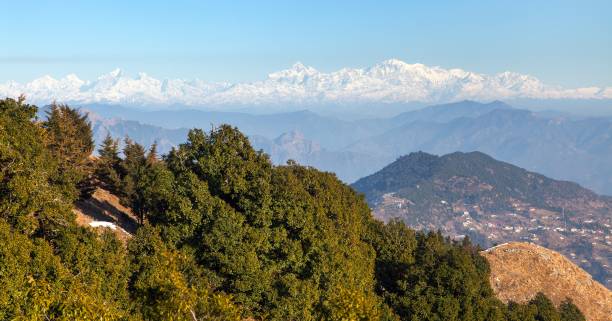Mountains have long been a source of fascination for artists, offering both inspiration and a formidable challenge. Throughout history, they’ve stood as symbols of strength, isolation, and grandeur. The depiction of mountains in art – the “oeuvre of mountain” – spans centuries, cultures, and mediums, yet the common thread is an appreciation of their majesty and the emotional depth they evoke. From early representations in religious art to contemporary landscape paintings, mountains hold a special place in the history of artistic expression.
The Symbolism and Power of Mountains in Art
Mountains are much more than geographical features; they are powerful symbols. In many cultures, mountains represent a bridge between the earthly and the divine. In ancient mythologies, gods were believed to reside on mountain peaks, closer to the heavens. Mount Olympus in Greek mythology, for example, was thought to be the home of the gods. In Eastern cultures, mountains are often depicted as places of meditation, spirituality, and tranquility, such as in traditional Chinese landscape painting. These towering formations evoke feelings of awe and reverence, and their inclusion in art often suggests a connection with something larger than oneself.
In the artistic oeuvre of mountain landscapes, the focus is often on conveying not just the physical form of the mountains but their spiritual or emotional weight. Artists capture the immensity of peaks, the solitude of high altitudes, and the connection between the natural world and human experience. In the Romantic period, particularly in the works of artists like Caspar David Friedrich, mountains were depicted as sublime, embodying nature’s overwhelming power and beauty. These paintings weren’t just about accurately representing a mountain; they were meant to evoke a deep, emotional response, a sense of being dwarfed by nature’s grandeur.
Early Depictions: Mountains as Backgrounds in Religious and Mythological Art
In many early art forms, mountains appeared as secondary elements in the composition, usually in the background. During the Renaissance, for example, landscapes, including mountains, were used as settings for religious and mythological narratives. In Leonardo da Vinci’s “Virgin of the Rocks,” the rocky, mountainous landscape behind the figures adds a mystical atmosphere, subtly reinforcing the divine nature of the scene. Here, the mountains, while not the central focus, play a vital role in setting the tone and enhancing the spiritual aura of the artwork.
Medieval Christian art also made use of mountainous landscapes, often as metaphors for the arduous path to spiritual enlightenment. Mountains were seen as obstacles that needed to be overcome, symbolizing the struggle toward divine truth or redemption. This symbolism continues to influence the oeuvre of mountain representations even in contemporary times, as mountains often serve as metaphors for personal or spiritual challenges in modern artworks.
In Asian art, particularly in traditional Chinese painting, mountains were central to the composition and often carried symbolic meaning. Artists of the Song Dynasty, such as Fan Kuan, painted monumental mountain landscapes that dwarfed any human presence, suggesting the smallness of humanity in the face of nature’s vastness. These paintings weren’t just about capturing the appearance of mountains; they conveyed a deeper philosophy about the relationship between humans and the natural world.
The Rise of Landscape Painting: The Oeuvre of Mountain in the Romantic Period
With the rise of landscape painting as an independent genre in the 17th and 18th centuries, mountains moved from being a mere backdrop to becoming the primary focus of many works. This shift was largely influenced by the Romantic movement, which emphasized nature’s power, beauty, and emotional impact. Romantic artists were drawn to the dramatic and untamed aspects of the natural world, and mountains, with their imposing size and rugged beauty, became a favored subject.
Caspar David Friedrich, a German Romantic painter, is perhaps one of the most well-known artists to focus on the oeuvre of mountain landscapes. In works like “Wanderer above the Sea of Fog,” Friedrich presents the mountain not just as a physical form but as a metaphor for the sublime – that mixture of beauty and terror that defines the Romantic experience of nature. The figure in the painting, standing atop a rocky peak and gazing out over a fog-shrouded landscape, seems to be contemplating both the vastness of the world and the limits of human understanding.
In Britain, J.M.W. Turner also captured the raw beauty of mountainous landscapes in his work. Turner’s paintings, such as “The Snowstorm,” depict the chaotic and overwhelming power of nature, with mountains serving as a backdrop to wild weather and dramatic lighting. Like Friedrich, Turner’s mountains are more than just scenery; they are active participants in the emotional drama of the painting, symbolizing nature’s indifference to human life.
The Romantic oeuvre of mountain landscapes emphasized the emotional and philosophical dimensions of nature. These artists weren’t interested in accurately rendering topographical details; instead, they sought to capture the feeling of being in the presence of something immense, eternal, and often terrifying. Mountains, in this context, became symbols of the sublime – a reminder of humanity’s insignificance in the face of the vast, untamed forces of nature.
Modern and Contemporary Art: Mountains as Inspiration and Challenge

In the 20th and 21st centuries, the oeuvre of mountain representation in art continued to evolve. Modernist artists, such as Paul Cézanne, approached mountains with a different sensibility. Cézanne’s repeated depictions of Mont Sainte-Victoire, a mountain in Provence, reflect his fascination with form, structure, and color rather than the Romantic idea of the sublime. For Cézanne, the mountain became a subject through which he could explore the underlying geometric forms of nature, leading to a new way of seeing and representing the world.
In contemporary art, mountains continue to inspire a wide range of responses. Some artists, like Ansel Adams in his photography, focus on the awe-inspiring beauty and grandeur of mountains, using new technologies and mediums to capture the fine details and textures of rocky peaks and snow-covered slopes. Adams’ black-and-white photographs of the American West, particularly the Sierra Nevada, have become iconic representations of the untouched majesty of mountainous landscapes.
Others, like contemporary installation artists, approach the idea of mountains in more conceptual ways. For example, artist Andy Goldsworthy creates ephemeral sculptures out of natural materials, often in mountainous settings. His works, which are subject to the forces of nature, highlight the transitory nature of human interventions in the landscape. In these works, the mountain itself becomes an active participant, slowly reclaiming the artwork as it succumbs to wind, rain, and time.
Conclusion: The Enduring Appeal of Mountains in Art
The oeuvre of mountain landscapes is vast and varied, encompassing a wide range of styles, mediums, and interpretations. From early religious and mythological depictions to the sublime mountains of Romantic painters, and from the geometric explorations of modernists to the conceptual interventions of contemporary artists, mountains continue to captivate the artistic imagination.
What unites these diverse representations is a recognition of the mountain’s power – not just as a physical object but as a symbol of nature’s grandeur, permanence, and mystery. Whether rendered in paint, photography, or sculpture, mountains challenge artists to capture their immensity, beauty, and emotional resonance. In doing so, they contribute to a long and rich tradition of mountain-themed artworks that will continue to inspire for generations to come.





